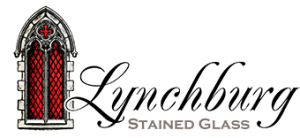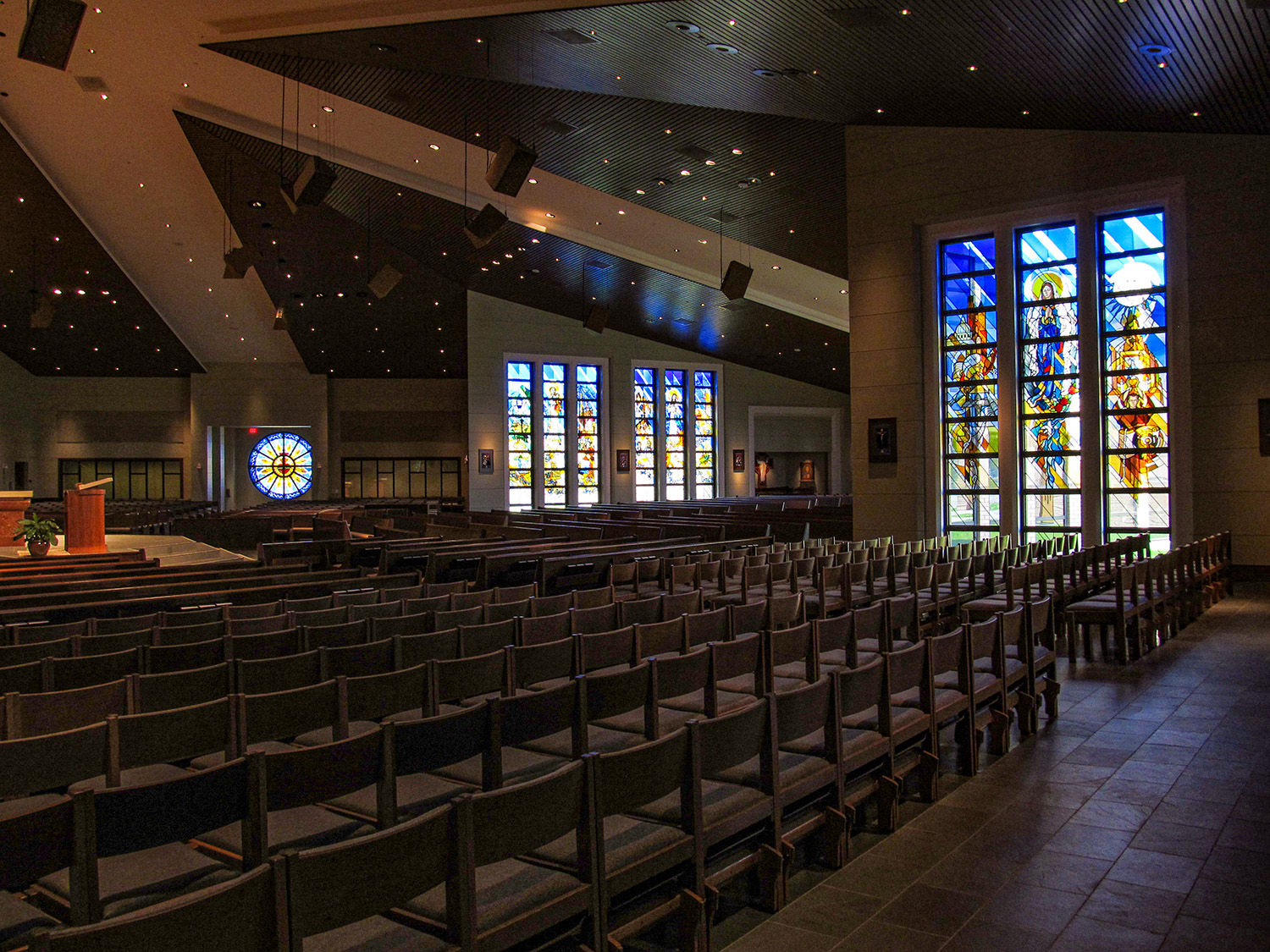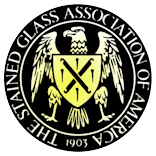FAQ – New Stained Glass
How do we get started?
Simply ask to schedule a free consultation! We will be glad to share our ideas for your windows as well as provide budget cost for your planning.
What are the costs of new stained glass windows?
Truth is… this is difficult to answer without spending a little time discussing your project. Every window we produce is a custom piece of art and the costs vary depending on the complexity (size) of the glass pieces and the amount of hand-painted detail within the window. We will gladly provide a range of budget cost and a set of design examples which illustrate the complexity and attention to detail for each cost tier proposed. All we need to get started are window sizes and a rough idea of the artistic style desired. (Many churches find it useful to pinpoint a few designs from our website that spark their interest.) From this, we can provide a custom art design specifically suited to your worship space.
Can I install stained glass into my existing frames?
Most often, the answer is yes. Vinyl windows and older aluminum frames are difficult to reuse for stained glass. However, for existing aluminum store-front type windows, stained glass can typically be installed to the interior of the existing clear glass.
It’s also common to install stained glass into existing wood double hung window frames. The existing wood sashes are removed and the stained glass is installed into the remaining wood perimeter frame. Protective storm covering can be added to help protect the stained glass.
Are new stained glass windows insulated?
Stained glass has little insulating ability by itself. However, when used in combination with our thermal break aluminum frame and insulated clear glass, the system is very thermally efficient. We typically recommend this frame for new construction projects. The frame has receptors for both insulated clear glass and stained glass.
Please describe the window art process from start to finish.
LSG will meet with your church discuss window themes and color schemes. Based on your input, we begin to prepare sketch work to illustrate the window. Upon completion of the artwork, a small scale color sketch will be presented to the church along with a cost proposal for the project. This process from initial meeting to the final sketch can take 3 to 5 weeks, depending on the design style. This first sketch then becomes the basis of style and complexity for the rest of the windows within the worship space. View the process here.
Will stained glass control the sunlight in our worship space?
Yes. With the correct design approach, strong sunlight can be diffused and thus controlled. The deeper glass tones work well
to control the light within a window. Much design consideration is given to the direction in which a window faces. Southwest, south, and southeast-facing windows obviously get the strongest light. Northern-facing windows are not directly exposed to the sun and can take advantage of lighter glass tones, streaky (mixture of color and clear glass) colors, and can even incorporate textured clear glass to create a unique design.
How long until we get our windows?
Generally… the entire process takes 60 to 90 days for non-painted work. and 90 to 120 days for painted work.
This is just a guide. Actual production time depends on our current backlog and the size of your project. Please keep in mind that you are purchasing a hand crafted work of art. Our windows are not machine made.
FAQ – Stained Glass Restoration
Does my stained glass need restoration?
Quality stained glass is crafted to last 100+ years. However, not all stained glass is created equal. Common window problems include out-of-plane bowing, leaking, loose window bracing, decay of wood frames, unstable/faded paint in painted windows, brittle and oxidized lead… the list goes on. Some stained glass repairs can be accomplished in place while others require the removal of the window. Call us today to arrange a survey of your stained glass windows. We can provide prioritized recommendations for the longterm care and maintenance of your stained glass windows.
What is re-lead restoration?
Re-lead restoration refers to the process of replacing the deteriorated lead of an antique stained glass window. The stained glass panel to be re-leaded is dismantled, cleaned, and reassembled with new restoration-grade lead. But don’t worry, a paper rubbing is made of the window prior to being disassembled. Technical aspects of the window (wind bar locations and lead widths) are recorded on the rubbing which act as guides to the reassembly of the window. Once reassembled, the “like-new” window is re-installed.
Can damaged stained glass be repaired?
Yes. Damaged stained glass can be repaired/replaced, often without removing the window. LSG maintains a large inventory of stained glass for just such repairs. If the broken piece is from a painted window then the replacement glass can be skillfully painted to match. Call us today to schedule a visit to assess the damage. We will be happy to provide a list of references for similar repairs.
Why are my windows bowed?
The answer is actually very technical and requires an understanding of how materials react to changes in temperature. Simply stated, glass and lead within a window shrink and expand with day-to-day solar temperature fluctuations. This repeated heating and cooling induces stress in the window which is relieved by the progressive bowing of the panel. Bowing is a slow process and can take years to develop. Bowing can progress to the point where the edge of the glass comes out of the lead. Worst case scenario… the bowing breaks the glass. Call us today if you have concerns about a bowed stained glass panel.
FAQ – Storm Covering Protection
What are the advantages of a vented storm covering system?
By nature, windows sweat in extremes of weather. A vented storm covering system allows this moisture to escape from between the stained glass and clear protective covering. Improper venting causes moisture to build up between windows and can promote wood decay in sills, etc. Our storm covering system provides perimeter venting through the frame.
Why should I use clear laminated glass instead of polycarbonate covering?
In short… polycarbonates coverings discolor with age. Laminated glass remains clear. In addition, laminated glass also provides protection to the stained glass. It is actually 2 layers of clear glass with an inner layer of Saflex, a material which holds the glass together in the event of breakage. Laminated glass is the same material used in automotive windshields.



